Not everyone knows this, but Gdańsk is where WWII started…. Westerplatte to be precise. During our visit to Gdańsk we visited the WWII Museum & Westerplatte.
World War II Museum
Where Is It
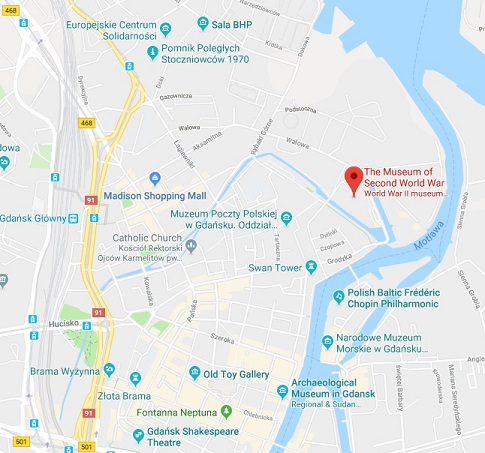
The WWII Museum is located on Władysław Bartoszewski Square, near Gdańsk old town.
History
The museum opened its doors officially in March 2017. It’s opening was fraught with controversy and made the headlines across the globe. Due to the different ideas between those on the museum board and the ruling party.
How To Get There
If staying in the old town the walk to museum is no more than 20 minutes along the River Motława. However, if you have a five year old, like us Uber can take you there in about 10 minutes and at the cost of under £2 (10 PLN).
Opening Hours & Cost
The museums opening hours can be found here.
The museum is free to enter on Mondays and further information on prices can be found here.
What To See and Do
The museum is split into 3 sections; ‘The Road to War’, ‘The Horrors of War’, and ‘The War’s Long Shadow’. I won’t go into great detail on each section as there is too much to cover, with thousands of objects on exhibit. The areas give a very detailed and informative description of how the war started, what it was like living through the war, the destruction it caused and the impact the war left after it finished.
The museum includes different ways of learning about WWII, from information stands, actual artefacts and interactive exhibits which tested our knowledge of what we had learnt.
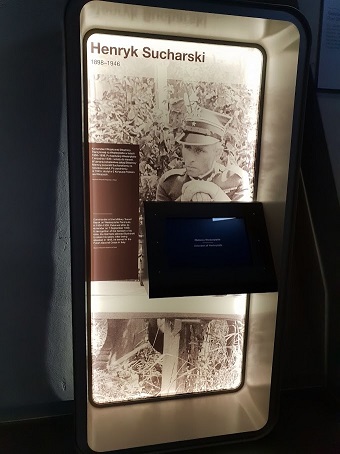
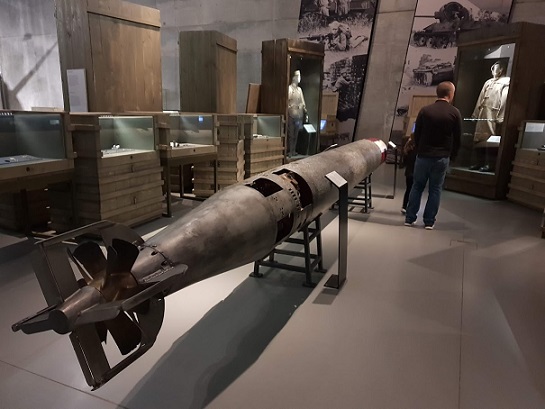
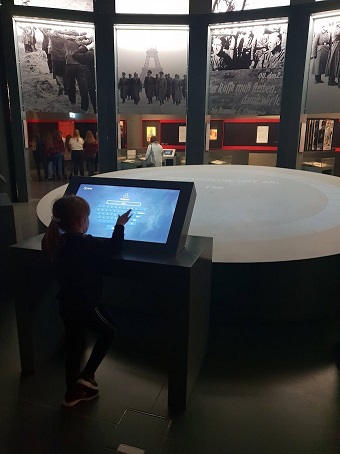
Megan was taken back when she was told the street below was before and after the war, amazing at that age she could understand the scale of the destruction caused.
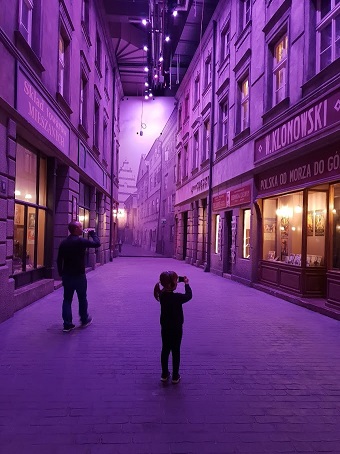
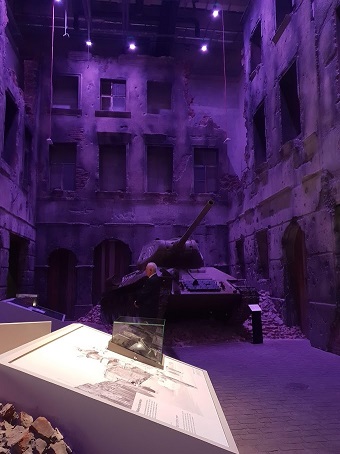
The suitcases in a pile represent those who entered concentration camps. I read a harrowing article that explained on entering people were given numbers so they could pick up their bags on leaving. Which as we know now was never going to be the case.
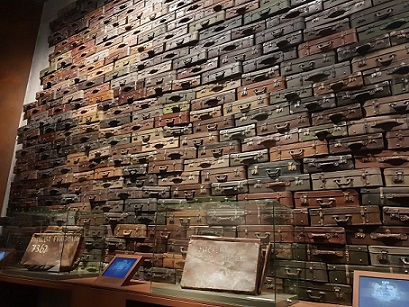
Would We Recommend
Yes. We thought this was one of the best museums we have been too. It was very interesting even with very little knowledge of WWII. While it was very sombre and at points a very gory subject, the museum has been set up in a way that kept our interest the whole way around. We would also recommend you get individual headsets.
Top Tip
- If you give your child the audio guide be aware that when they shoot off to the next stage it is because the audio has told them too. However, it doesn’t mean right this moment.
- Leave your coat and bags in the lockers available, it gets very warm.
- Leave yourself enough time, a friend had to leave after near 4 hours as the museum was about to close.
Westerplatte
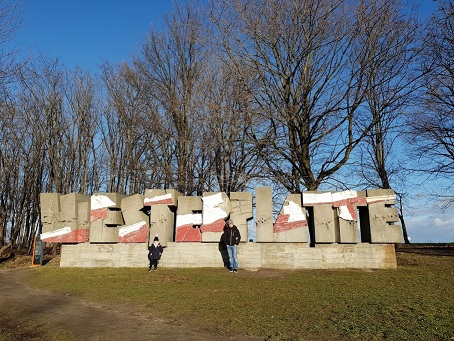
Where Is It
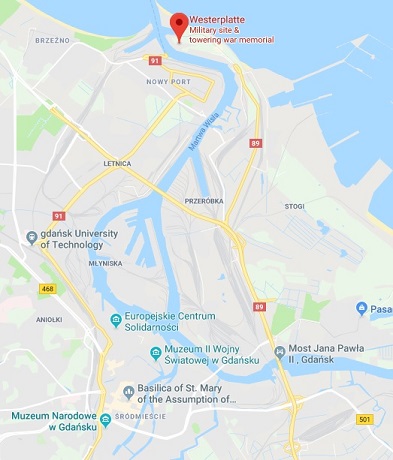
Westerplatte peninsula around 3 miles outside of Gdańsk.
History
Westerplatte is where the first shots were fired in WWII. It is here the German Battleship Schleswig-Holstein fired on where around 200 Polish soldiers were stationed. The soldiers came under sustained attack from the air/sea/land, these soldiers held off the Germans for 7 days, preventing them from moving further down the coast. They finally had to surrender due to have no ammunition or supplies. The Germans huge in numbers lost around 300 soldiers during the battle, where as the Polish lost around 15. The German General was so impressed with the heroism of the Polish soldiers, he allowed the Polish Major to carry his sword into captivity and saluted the Polish soldiers.
How To Get There
We used an Uber which cost us 20 Zloty from the World War II museum.
If you want to use public transport from the main train station in Gdańsk, the 106 bus leaves from outside. During the summer months the easiest way to get out there is to take the Water Tram #5 which stops outside the Hilton in the Old Town and drops you at Westerplatte.
I recommend an Uber, as if the weather changes there is no shelter and no facilities to use while hanging about for the bus.
Opening Hours & Cost
The area is open 24/7 and cost is free. Although I wouldn’t go late at night as there were signs of anti social behaviour. I would also avoid wet days as there is zero shelter.
What To See and Do
The main reason to visit Westerplatte is to see one of the sites where WWII began. The open air museum takes you through a winding forest trail where you come across many bunkers, monuments and guard houses, at each stage there are information signs explaining the history of what you will see.
Bunkers/Ammunition houses
All along the first part of the trail we seen small bunkers and the remains of buildings. We learnt here how taken by surprise the Polish were. It really amazes me how with so little supplies and infrastructure they took on the might of Germany and proudly held out for so long.


Lookout tower
We were able to climb to the top of the look out tower. However, Megan had other ideas and we moved on. The view would look out into the Gulf of Gdańsk where the German battleship placed herself.
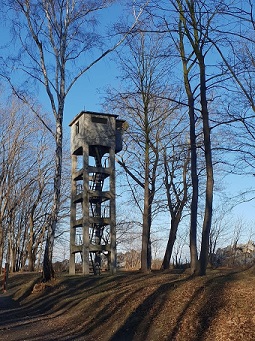
Cemetery of the defenders of westerplatte.
This small cemetery contains the bodies of the 15 men who died during the first engagement of World War II.
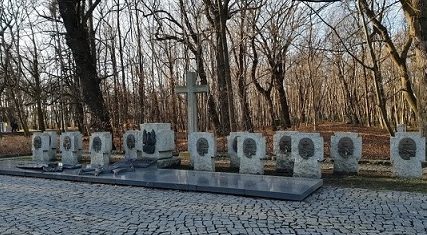
While at the WWII museum, we learnt about Major Henryk Sucharski, and how when captured by the Germans he was allowed to carry his sword into the POW camp as a sign of respect from his German counterpart. The Major after being released from the POW camp was killed in Italy in 1946. His remains were brought to Gdańsk in 1971 and reburied along side his men on 32nd anniversary of the attack.
Without having visited the museum earlier in the day, we would not have know the above information.
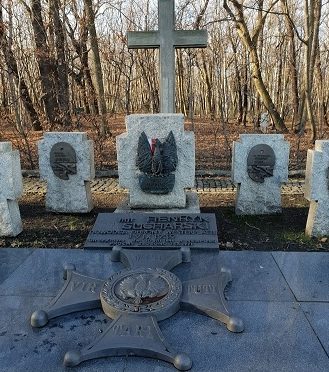
Bomb damaged barracks
We couldn’t believe it when we found the old barracks which had been damaged by bombs, even more amazing (Health and Safety would love this) we could actually walk around the barracks inside and see the damage that was caused. Along the front of barracks you can read the names of the men who died here.


No More War sign
A very poignant sign we seen on the approach to the memorial, loosely translates as ‘No More War’. Although admittedly we didn’t know this at the time, and had to google it!
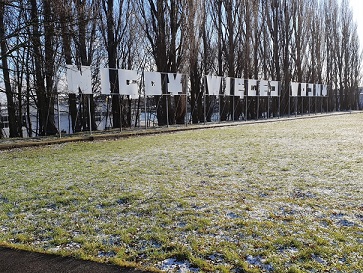
Westerplatte Memorial
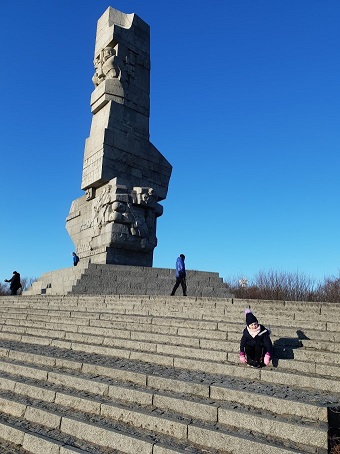
We made the spiral walk around the mound up to the Westerplatte memorial, this large granite memorial is dedicated to the Polish defenders who lost their lives defending Westerplatte and surrounding areas. A truly memorable way to end our visit to Westerplatte.
Would We Recommend
Yes. Westerplatte has huge significance in WWII and we found it very interesting. However, it would be better if it was a guided tour or a joint effort with the WWII museum with a headset provided at both locations which would add to the experience.
Top Tips
- There is very little to no shelter at Westerplatte so go on a day when it is dry.
- The only toilets available are portaloo types, so suggest you cross your legs , or go before you head for Westerplatte.
- If going by Uber or Taxi ask them to drop you at the huge Westerplatte sign, not at the car park or you will be doubling back on yourself to get to the start.
Thanks
The Lewis Family.
More posts on the Poland, found here.



Brilliant and informative post. Seems like a harrowing but interesting day! I’ve added both sites to my to-do list for Gdansk.
Hope you enjoyed visiting the museum, we learnt an awful lot and my daughter actually used it during a WWII topic in school.